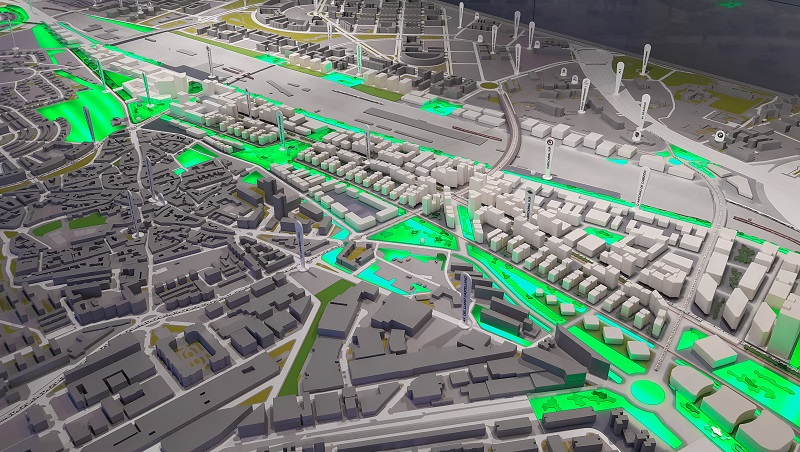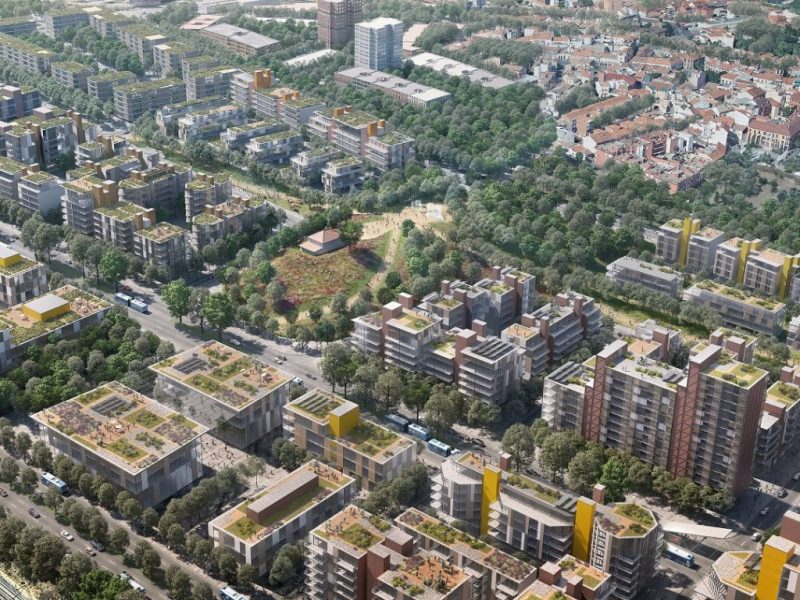18 October 2019
for Madrid Nuevo Norte


Removing the physical barrier of the rail yard that separates Las Tablas and Castilla districts, to the east, from others to the west, including La Paz, Begoña, Fuencarral and Tres Olivos is a major goal of Madrid Nuevo Norte. This is achieved by covering the tracks south of the M-30 ring road, and building various connections and bridges between the M-30 and M-40 ring roads. However, the project has not only sought to connect the previously isolated areas of the city but also ensure that the new areas are fully integrated with the existing ones.
An excellent urban design helps connect the consolidated neighbourhoods to the newly created ones. By contrast, a poorly thought-out design could aggravate the “barrier” effect between new and pre-existing areas, creating new developments that are perceived as a “foreign body” by its immediate urban environment. This undesirable effect occurs too often in cities around the world. However, new trends in international urban planning, aimed at making cities more liveable, are gradually changing that scenario in recent years by making residents a priority.
This factor has been borne in mind at Madrid Nuevo Norte from the beginning. Design decisions sought to achieve continuity between the urban fabric of the project and the consolidated neighbourhoods around it. Particularly noteworthy is the measure aimed at linking the historic centre of Fuencarral, a neighbourhood with a unique layout structured over the centuries when it was a town independent of Madrid.
Madrid Nuevo Norte’s streets will be extensions of existing ones, including some that are currently a cul-de-sac. This would be the case of Isla de Sumatra or Cristo de la Vera Cruz streets, among many others, that will be integrated into the new road network, thus ending its isolation.
Madrid Nuevo Norte will extend Castellana Avenue, restoring its original role as a walkable road instead of a major avenue for road traffic. This green axis, which will run north to south, will put quality public space centre stage. This green avenue will include a chain of parks along the western border of the project. The location of the green axis, in contact with La Paz, Valverde and Tres Olivos neighbourhoods, is not by chance, as it will run adjacent to Madrid Nuevo Norte, one of the most eye-catching public spaces.

Several parks along this green corridor are part of the continuum delimited by consolidated parks in the area, including Begoña Park, Isla de Java Park or Enamorados Park. This allows the new green areas to be extensions of the old ones, supplementing them.
Two of the new parks located on this axis will bring value to two historic buildings in Fuencarral, a 16th- and 19th-century shrine. Each shrine will be at the heart of two new, different green areas, thus restoring elements that are essential to the history and identity of the neighbourhood.
Neighbourhoods linked by interspersed buildings
Beyond the green spaces, the new buildings in the boundary area will have significant uses. They will house public facilities highly demanded by the residents of adjacent neighbourhoods, including schools, sports centres or senior residences, remedying historical shortcomings. The facilities in these transition zones have been interspersed with housing blocks with ground-level retail. This balanced mix of facilities and residential uses, public spaces and local shops will prevent the emergence of a homogeneous linear façade. This design helps create a lively and diverse urban environment.
In terms of measures intended to blend in the project with its urban environment, particularly noteworthy is the need to adapt the height of the new buildings along the boundary area to those of the adjacent city, making sure that sunlight reaches the buildings and public spaces adequately.